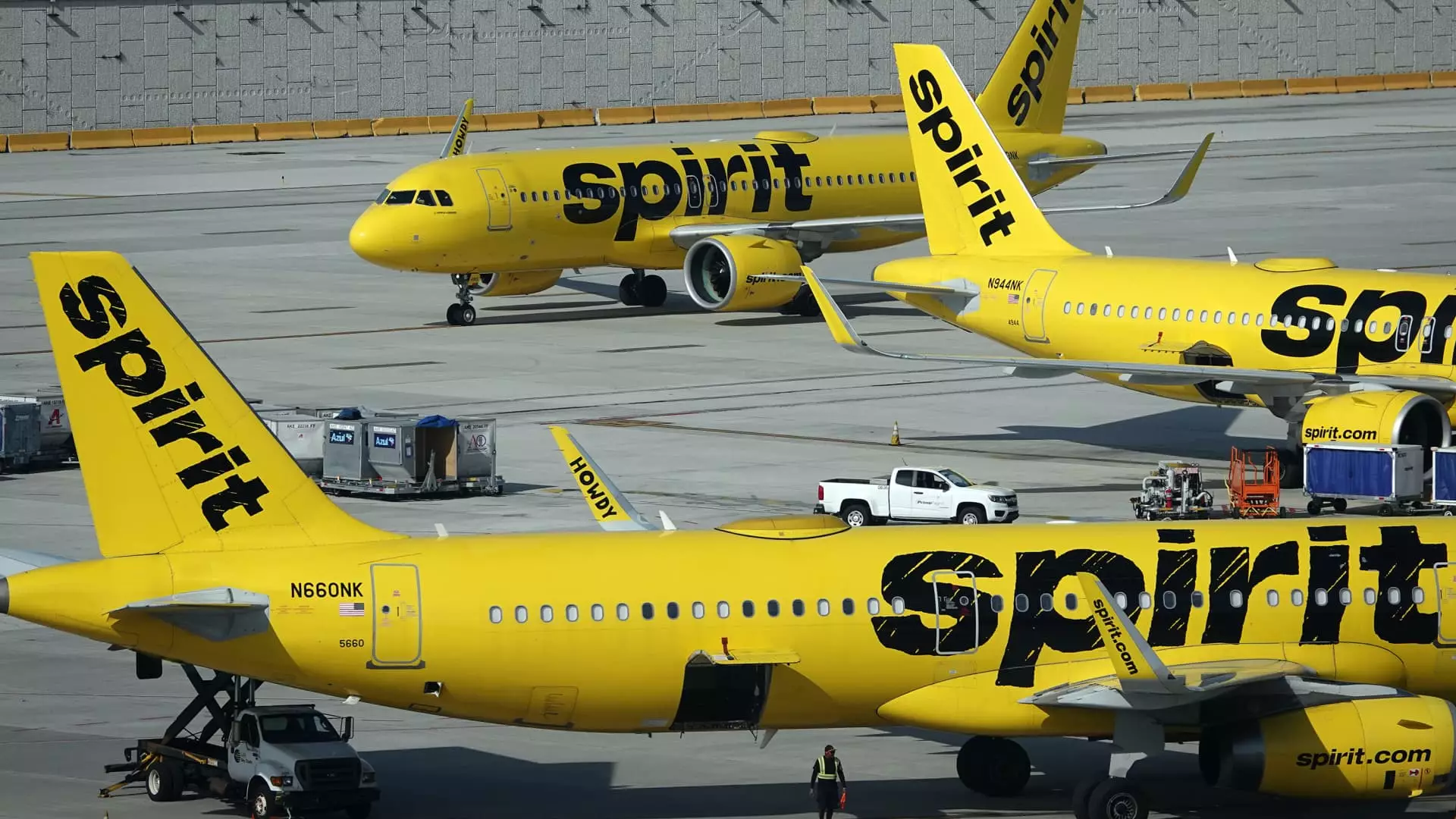In a decisive move to stabilize its finances amid ongoing turbulence, Spirit Airlines has announced a strategic plan aimed at reducing operational costs and generating much-needed liquidity. The low-cost carrier revealed that it would be selling off 23 of its older Airbus aircraft, a transaction projected to yield approximately $519 million. This strategic divestiture is part of a broader initiative that also entails laying off employees, which is expected to trim around $80 million in costs. These actions come at a critical juncture for Spirit, as the airline seeks to navigate its way back to profitability following the unprecedented challenges posed by the COVID-19 pandemic.
The budget airline’s struggles highlight a significant shift in travel demand, complicating its recovery efforts. Spirit is not only grappling with a drastic reduction in passenger numbers but also with operational constraints due to the grounding of multiple Pratt & Whitney-powered aircraft, further exacerbating their financial woes. The decision to delay the refinancing of more than $1 billion in debt until late December underscores the airline’s attempt to buy time while it negotiates better terms with its credit card processor and creditors.
Despite a notable spike in share prices following the recent announcements, Spirit Airlines stock has experienced a staggering decline of over 80% this year. This drastic fall is attributed in part to a failed acquisition by JetBlue Airways, which was blocked by a judge earlier in the year. The inability to merge with a larger airline has placed significant pressure on Spirit’s market positioning, further straining its financial viability. The airline’s proactive steps, while potentially beneficial in the long term, have not yet turned around investor sentiment, causing ongoing volatility in its stock performance.
Additionally, the future of Spirit Airlines appears uncertain, as it has begun furloughing around 200 pilots while also indicating a significant reduction in its operational capacity for 2025, which is projected to be down in the mid-teens percentage range. This suggests a drastic re-evaluation of flight schedules and workforce requirements, raising questions about how the airline will maintain service and customer satisfaction amid reduced operational capabilities.
In a potentially promising development, discussions between Spirit Airlines and Frontier Airlines regarding a possible merger have surfaced again, initially spurred by the lack of a viable acquisition from JetBlue. This revival of merger talks has been met with cautious optimism in the market, as many analysts believe that a successful merger could provide the scale and operational efficiencies necessary for both airlines to compete more effectively against larger carriers in an increasingly competitive environment.
While no official comments have been made by either airline regarding these discussions, the mere mention of a potential merger has resulted in positive movement in share prices, suggesting that investors are looking for synergistic growth opportunities in a consolidating airline industry. Whether these discussions will lead to a formal agreement remains to be seen, but for Spirit Airlines, this could be a pivotal moment in its quest for stability amid a landscape fraught with uncertainty.

Leave a Reply